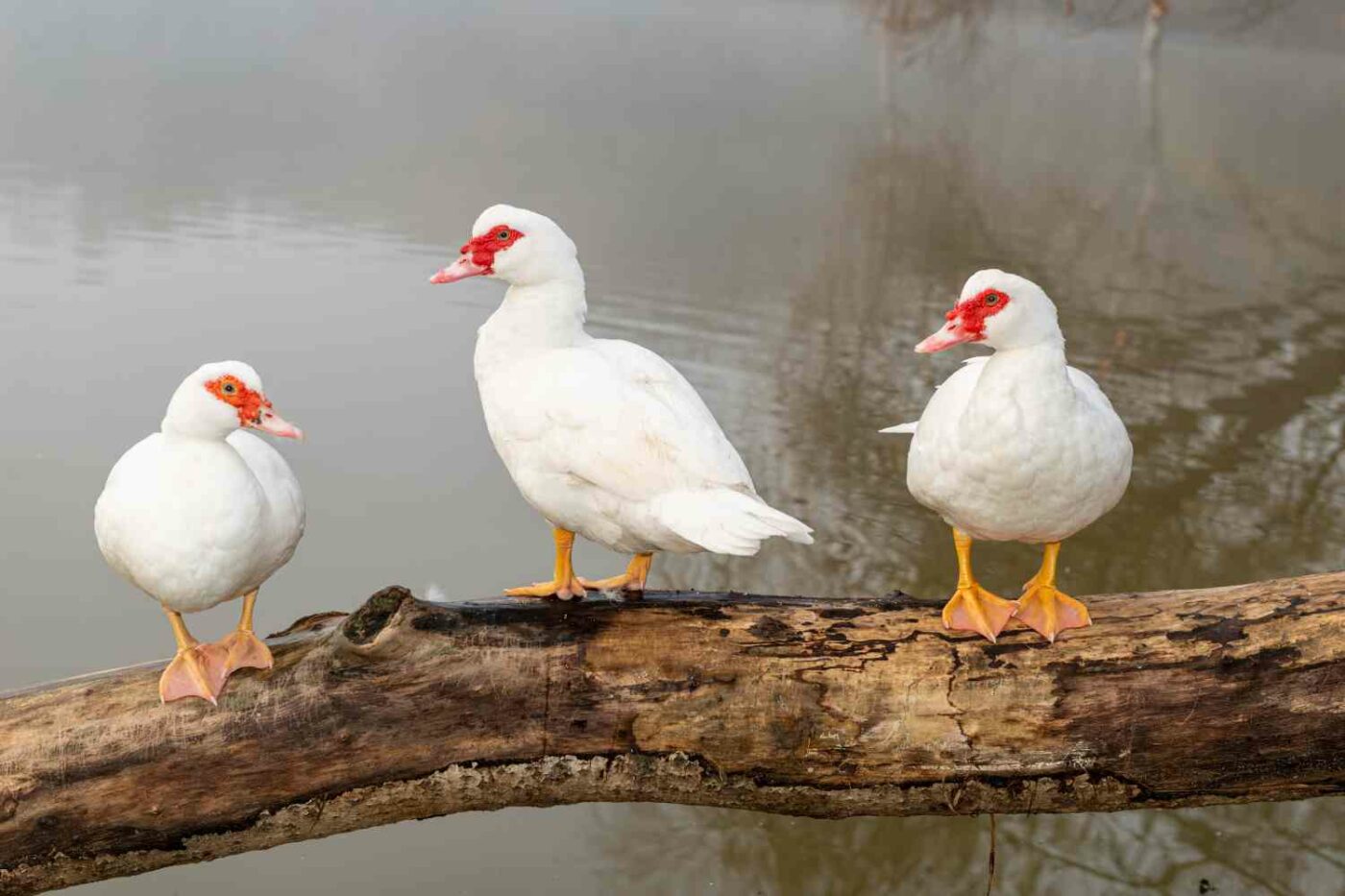
What are Muscovy Ducks?
Have you been hearing about muscovy ducks, and you’re wondering what sets these fowl apart from other types of ducks? These odd-looking birds are some of the oldest domesticated fowl species in the world. They are heavier and less agile than other species of ducks. Owners of muscovy ducks have found them to be perfect ducks to keep on the property with their quiet nature and simple diet.
Muscovy ducks are native to South America, Central America, Mexico, and parts of southern Texas. They are the only domestic ducks that are not descendants of the mallard. Weighing up to 15 pounds, male muscovy ducks are the largest species of ducks in the world, with female muscovy ducks being roughly half the weight of the males.
Characteristics of Muscovy Ducks

One of the main characteristics of muscovy ducks that sets them apart from other species of ducks is their size and robust build. These ducks have a more sturdy and heavy build.
The most distinct characteristic is the red, warty caruncles around the eyes and bills of muscovy ducks. These caruncles are more pronounced in males than in females. Muscovy ducks’ feathers are glossy and can appear iridescent in the right light. Their wings and tails are long, broad, and strong.
- Head: Crest of erectile feathers
- Eyes: Yellow or Brown eyes
- Wingspan: They have up to 64 inches of wingspan
- Bill: Flat yellow, pink or black
- Caruncles: Males have large and colorful caruncles
- Body: Long, Broad
- Tail: Wide flat tail
- Feathers: Black feathers (iridescent or muted)
- Feet: Webbed feet with long claws
- Colors: White, black, blue, green, barred, rippled, and chocolate
Male Muscovy Ducks
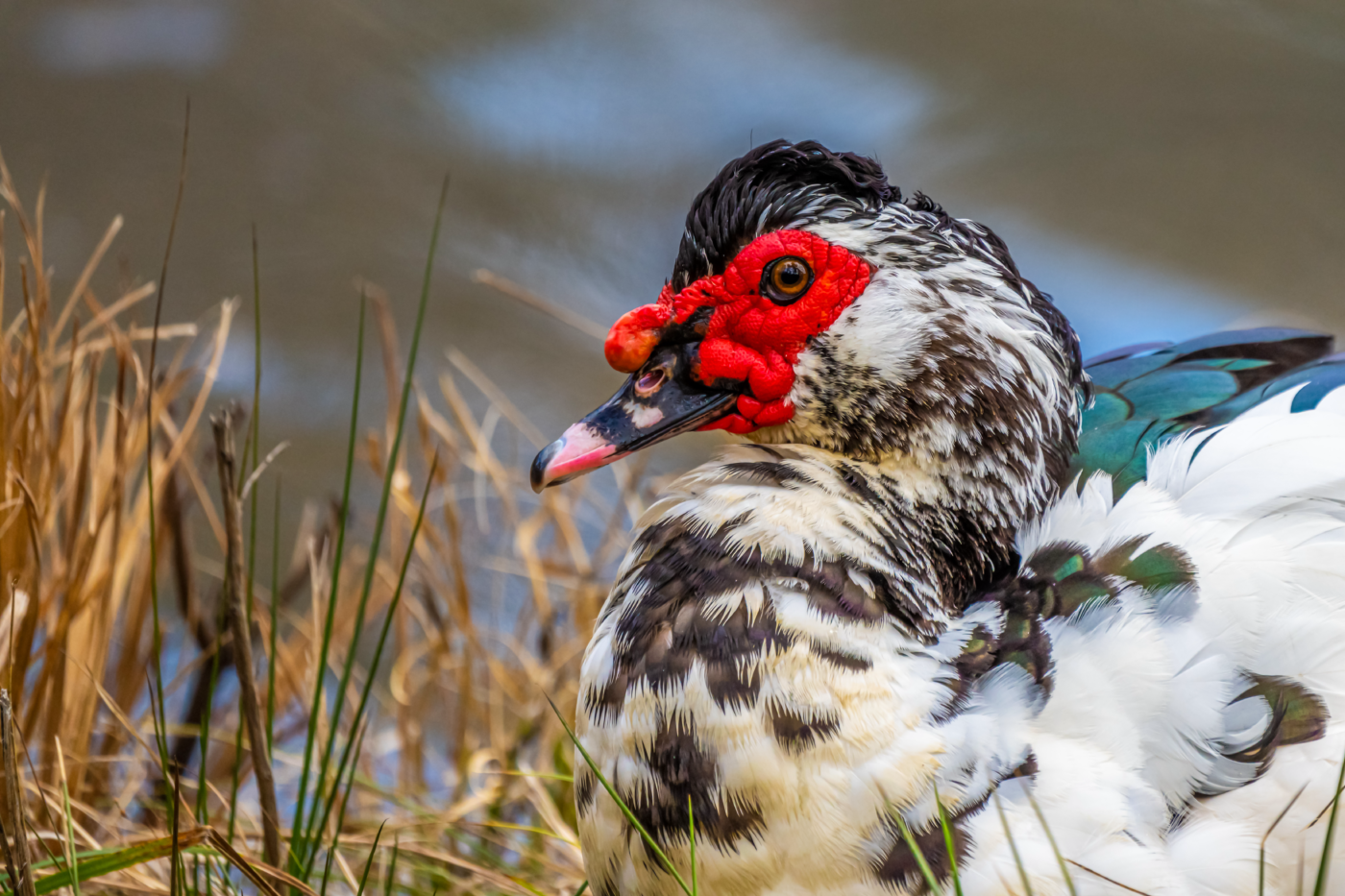
Male Muscovy ducks, or drakes, are characterized by their large size and more dramatic features in comparison to females. As a drake matures, its caruncles become more pronounced and give the males a rugged appearance. The crest of the drake’s head has more developed feathers that can be raised or lowered.
Male muscovy ducks are generally quiet and known for their lack of quacking. Rather than quacking, drakes produce a soft, hissing sound. During the breeding season, drakes tend to be more territorial and aggressive as they compete for mates.
Female Muscovy Ducks
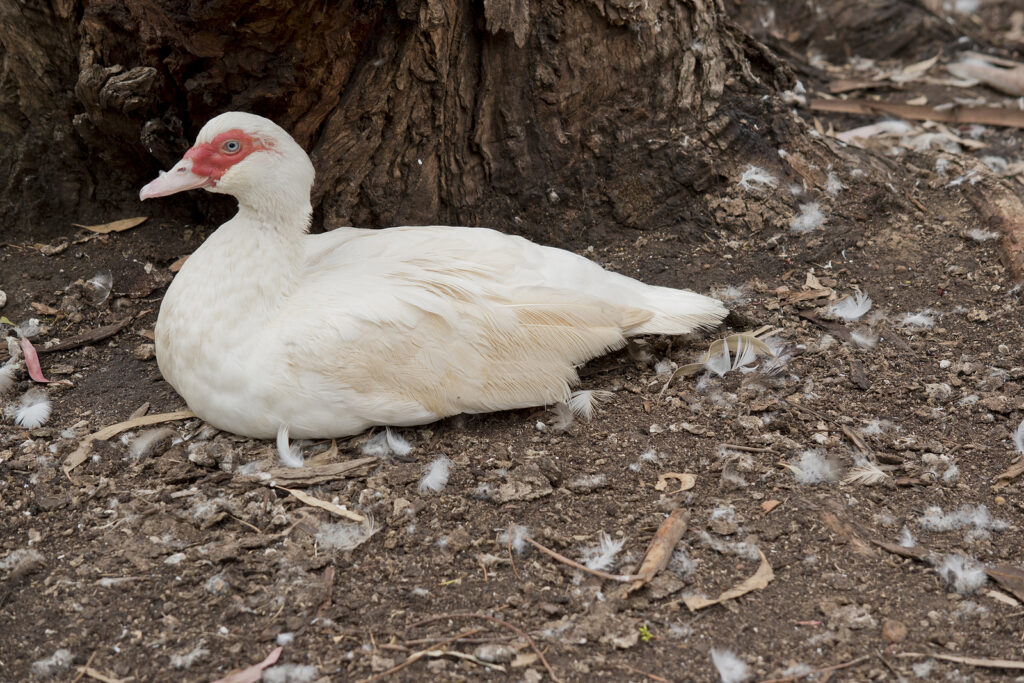
Female muscovy ducks are smaller than drakes and typically weigh between 6 and 7 pounds. Their faces have less pronounced carbuncles and smoother faces that are less rugged-looking. The bodies of female muscovy ducks are slender and sleek and tend to have a more elegant appearance in comparison to males.
The temperament of female muscovy ducks is generally quieter and more docile than males. They often form close-knit groups with other females and offspring. Muscovy duck hens are known for their strong maternal instincts that make them fiercely loyal to protecting and nurturing their young.
How To Differentiate Between Female And Male Muscovy Duck
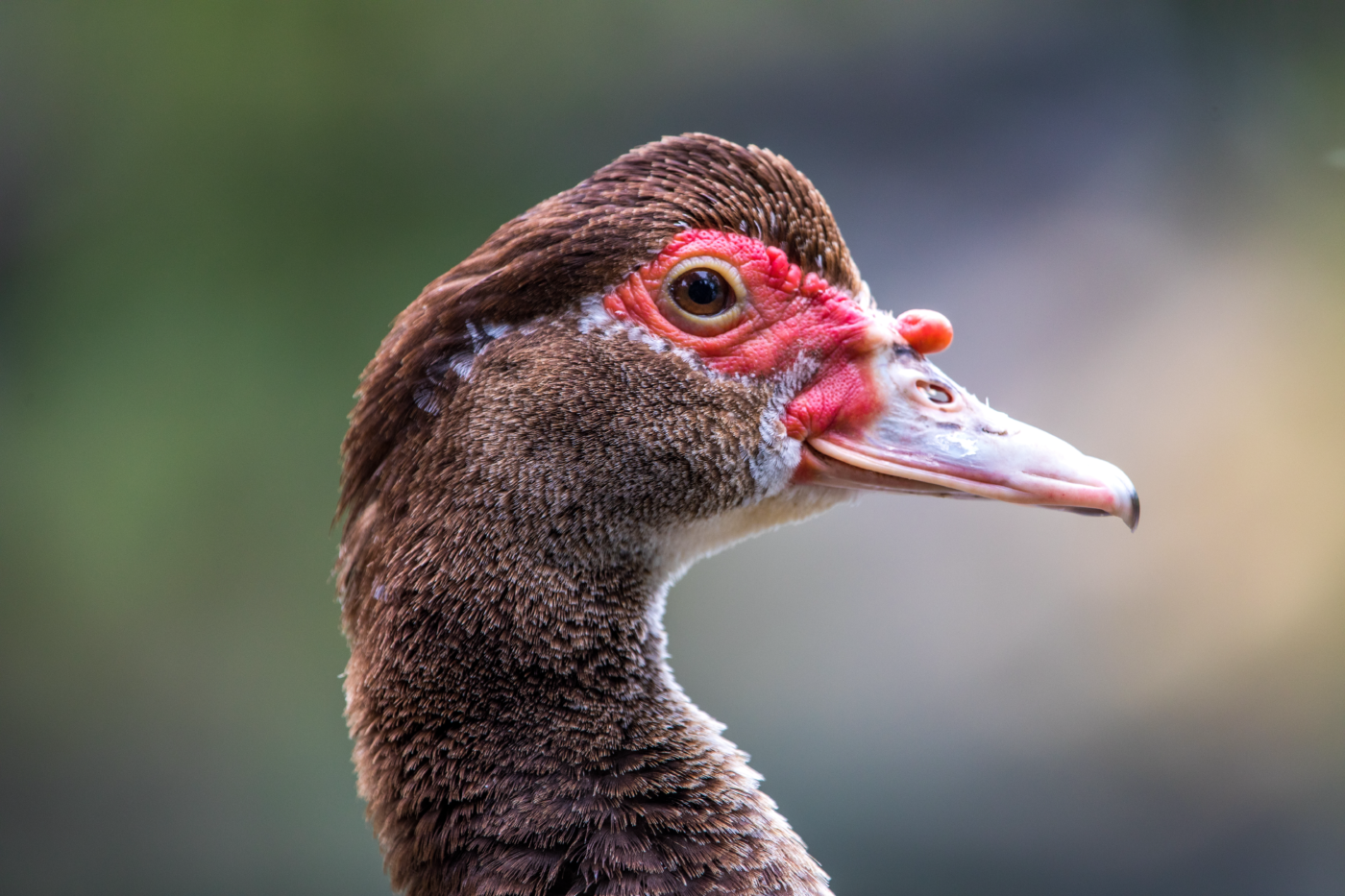
Female Muscovy Ducks
- Feathered faces and smaller masks around their eyes and faces.
- Half the size of the male Muscovy Duck.
- They can fly easily like wild ducks.
- When vocalizing, they make a quiet trilling coo sound.

Male Muscovy Ducks
- An array of caruncles around their bills and eyes, extending down to their necks.
- Larger than the female Muscovy Duck.
- Hard for them to fly.
- When vocalizing, they make a breathy hiss, hoarse.
Muscovy Duck Colors
The most common color for muscovy ducks is black. The ducklings have a dark head, body, and feet that will all continue to darken as they mature. Besides black, muscovy ducks are found in a variety of colors. From blue to lavender to chocolate, you can find pretty much any shade of duck you want!
How Long Do Muscovy Ducks Live?
If you’re thinking of keeping muscovy ducks, it’s essential that you know the approximate lifespan of muscovy ducks. Muscovy ducks have a relatively long lifespan compared to other species of ducks. Domestic muscovy ducks can live for up to 10 years, but they’ve been known to live even longer. Wild Muscovy ducks might now live as long due to predators, habitat, and the conditions of their environment.
Are Muscovy Ducks Friendly?
Muscovy ducks tend to be more shy and less sociable than other species of ducks, but the temperament depends a lot on the individual duck. Like any animal, Muscovy ducks each have their own personality, and you can’t make a generalization about all Muscovy ducks based on one.
If you are hoping for a particularly tame and docile duck, make sure you get it as a duckling or hatch the duckling from an egg. Introducing your ducklings to humans and socialization at a young age is essential to keep them docile and friendly.
Muscovy Ducks As Pets
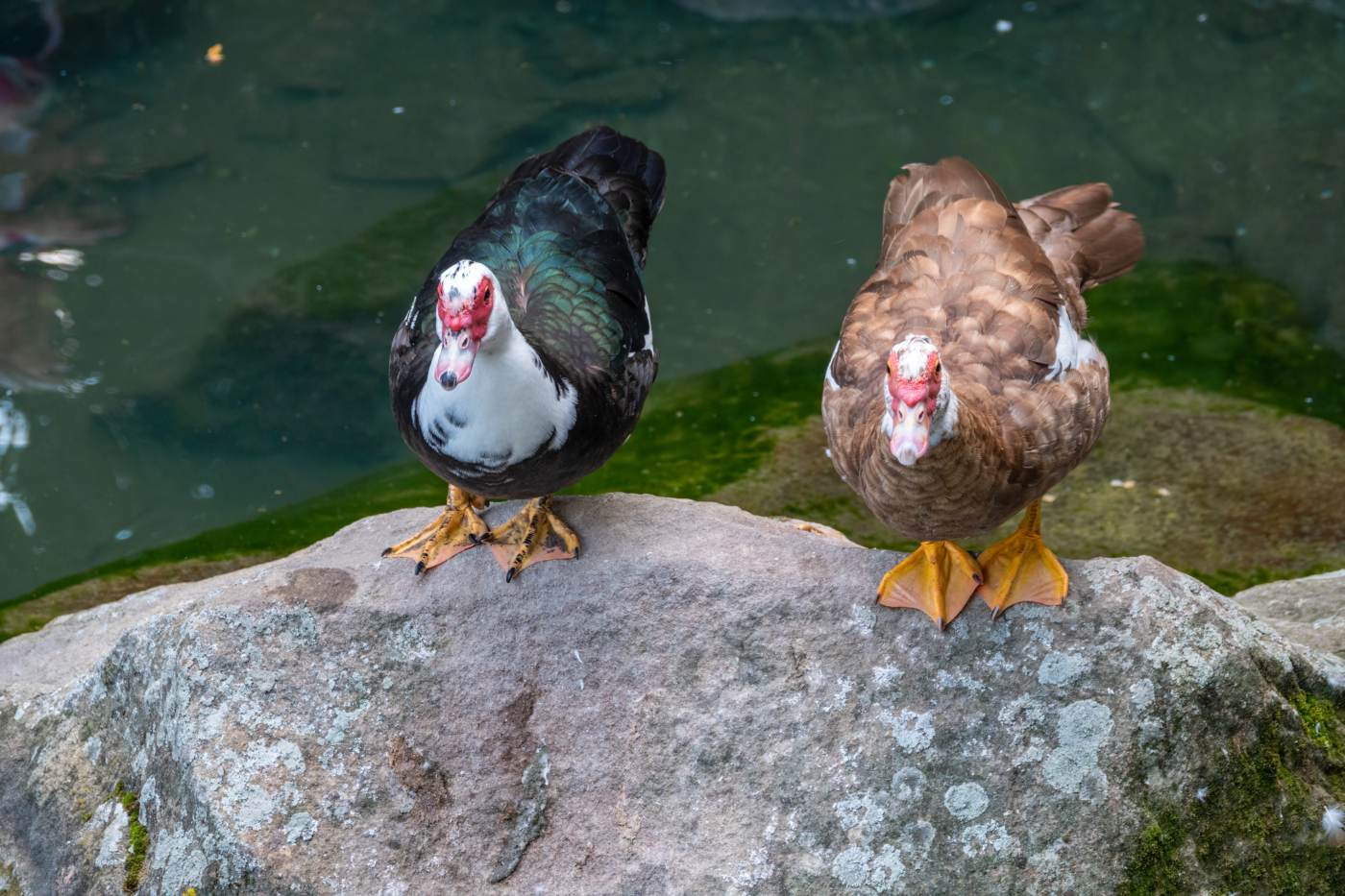
- When buying a Muscovy duck, make sure to buy more than one. This type of duck is a social animal, making it difficult for them to be by themselves. It’s recommended to buy one male Muscovy duck and at least 2-4 females.
- The environment is a big factor when purchasing Muscovy ducks. They are sensitive to cold weather, so they need to be kept in a warm environment. Ducklings, especially when the mom isn’t around, need a warmer place because they aren’t old enough to generate their own heat.
- Muscovy Ducks are easy to take care of as pets. They eat almost anything from small fish, termites, millipedes, small reptiles, insects, grass, grains, and plants. They will help with pest control.
- Muscovy ducks are covered with waterproof feathers that help them stay insulated when they are in the water.
- Muscovy ducks are often preyed on by dogs, foxes, raccoons, opossums, and skunks. They are also preyed on by other birds such as owls.
Are Muscovy Ducks Dangerous?

Muscovies are friendly with distinct characteristics. Because of their friendly personality, Muscovy ducks wag their tails when they are happy, just like dogs. They are friendly and calm. They are only dangerous when they are competing for resources and space or when threatened. These ducks need a minimum of 4 square feet of space for each duck, on a property no smaller than a quarter acre. When they see a threat, they call out to alarm the others.
Muscovy drakes fight for space more over territories, food, and females. These fights can go on from minutes to hours if none of the drakes win the fight. Muscovy mothers are dangerous when they’re broody. They will fight off predators to protect their eggs and their ducklings. It’s not advised to collect their eggs while they’re around as it can be dangerous
When threatened by predators, they use their wings, claws, and beaks to defend themselves. Because of their size and big claws, they need to be handled with care and a lot of attention to prevent the handler from being harmed. While processing Muscovy ducks make sure you restrain them quickly.
Muscovies are typically quiet, even though they have big flocks. When communicating with the ducklings, the Muscovy moms use low-frequency calls while the male drakes use hissing noises.
What Are Muscovy Ducks Used For?
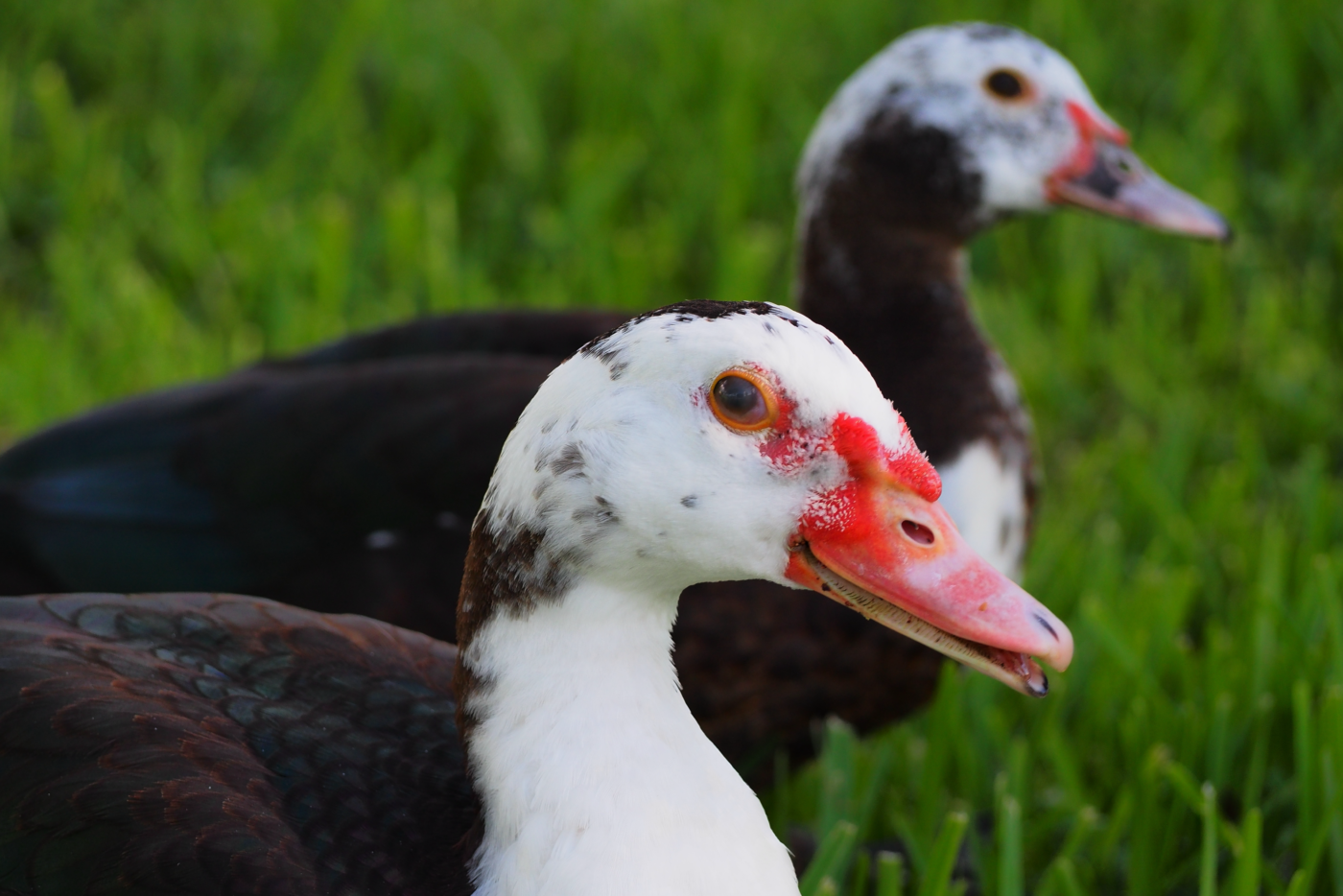
Muscovy ducks are used for a variety of purposes across the world. From commercial use to backyard pets, these ducks make great additions to your property.
Can You Eat Muscovy Ducks?
Yes, you can eat muscovy ducks! This is, in fact, one of their primary uses. Muscovy ducks are known for their lean and flavorful meat, which is similar to veal or roast beef. This type of fowl is raised all over the world and valued for its taste and texture, and is used in a range of delicious dishes.
Can You Eat Muscovy Duck Eggs?
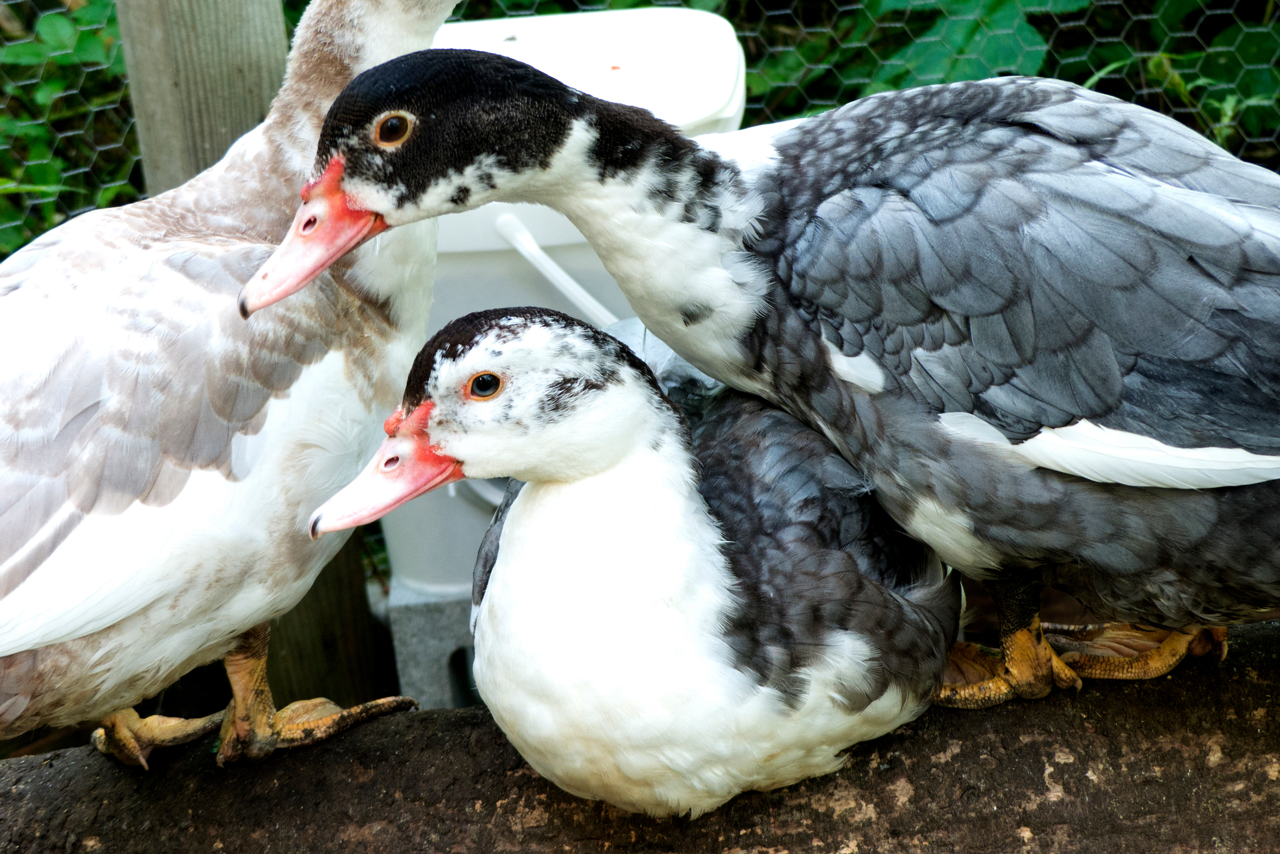
Female Muscovy ducks lay large eggs that are rich in nutrients. They don’t lay as many eggs as other ducks, but their eggs are known for their above-average size and taste. You can use Muscovy duck eggs in cooking and baking. They are used by chefs who prefer larger eggs with richer yolks than other duck or chicken eggs.
The Muscovy duck can lay up to 195 eggs per year over a 40-week season starting spring. The Muscovy duck egg has a hard shell compared to other ducks, the eggs weigh nearly 3 ounces making it a jumbo-sized egg. Muscovy ducklings start to lay their eggs about 6 months old, they will continue to lay their eggs up to 3 years or longer if fed a rich-protein diet.
Their mating season starts in August and ends in May, to increase the production of the muscovy ducks, introduce them to artificial light during winter months. Because of their underdeveloped oil glands, these ducks do not swim. They are mostly raised for their meat which is used for different cooking purposes. Because of their meat quality and size, Muscovy Ducks are very popular in the duck farming industry. Muscovy Ducks are social and very friendly, they will wag their tail when they’re happy to see you.
Muscovy Duck Vs. Normal Duck
Duck Type | Muscovy Ducks | Normal Ducks |
| Incubation Period | 35 Days | 28 Days |
| Eggs Size | 2.7 oz ‘Jumbo’ Size | 2.5 oz |
| Egg color | Cream or White | White |
Where Can I Buy Muscovy Ducks?
If you are ready to add Muscovy ducks to your family, Shirlock Acres is the place for you! We ship Muscovy ducklings and eggs all over the United States. Whether you need males, females, or both, we can ship your new ducklings right to your door!
Frequently Asked Questions
Q). Does the FWC remove Muscovies?
A). The FWC is not responsible for removing nuisance Muscovy ducks. This can only be done by the landowner or a hired wildlife trapper with permission from the landowner.
Q). Do I need a permit to remove Muscovy ducks from my property?
A). You don’t need a permit to remove them from your property. Make sure you are using humane methods of live capture by using nets or cage traps. Make sure you check your traps every 24 hours and release any non-target species.
Q). Can Muscovy ducks fly?
A). Domesticated Muscovies can fly but it is more difficult for them because of their larger bodies.
Q). Are Muscovies good pets?
A). If raise correctly and cared for, they are great pets.




